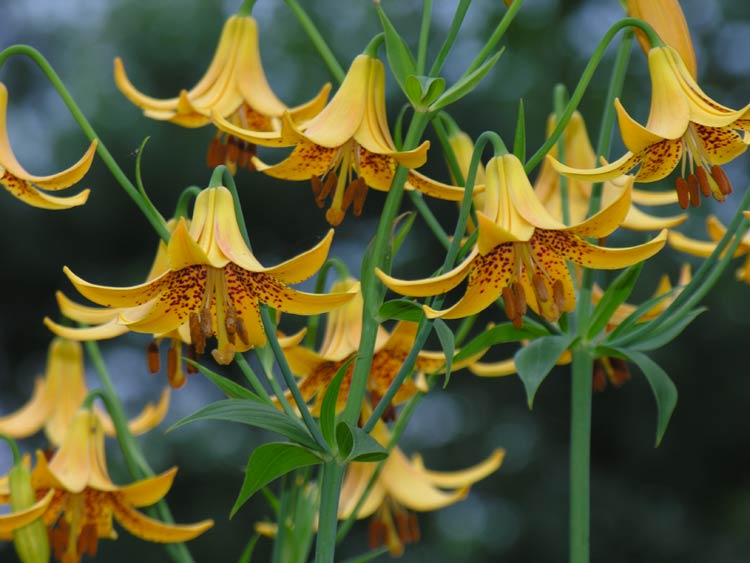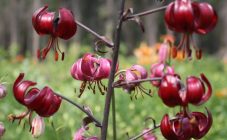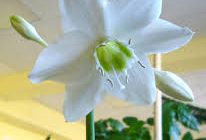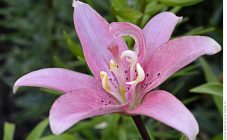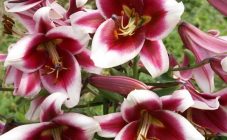Content:
Lily Candidum is a whole varietal group of flowers with snow-white petals. It has been known to people since ancient times. Even in antiquity, temples were decorated with these flowers, and Greek and Roman doctors were familiar with the healing properties of the plant. Today, lily Candidum (Lilium Candidum) is found everywhere, and it is appreciated precisely because of its decorative properties.
Lily Candidum: main characteristics
Another name for this bulbous plant is snow-white lily. It is interesting that in nature it is the only species with a Mediterranean type of development. This flower grows mainly in Western Asia and the Balkans, preferring rocky areas and a moderately humid climate.
This is a medicinal plant, all parts of which are used in herbal medicine, due to the unique chemical composition of the plant, which includes flavonoids, ascorbic acid, alkaloids and saponins, useful mucous and tannins, as well as a number of minerals. It's believed that:
- the bulb of the plant has analgesic properties and wound healing properties. Compresses used to treat wounds and abscesses are made from it;
- the roots have healing properties, it is used to make creams in cosmetology;
- the lily stem is used to prepare a tincture that treats heart disease;
- the leaf of the plant can be steamed and applied to burnt or inflamed skin instead of a compress;
- the petals are used to prepare an alcoholic tincture or lotion with anti-inflammatory properties.
The pure white color of the flowers is also due to the chemical properties of the plant. It has a whitening effect, therefore it is used in cosmetology to eliminate freckles and age spots.
It is interesting that the water lily has another name - water lily, and all because of the snow-white petals for which this plant is famous.
Plant characteristic
White lily Candidum is a very interesting variety. In general, these plants have a wide variety of root systems and stems, but this group is a classic version. The adventitious roots are found only on the "bottom" of the bulb. In biology, it is called its own-rooted variety. But other species have additional roots that are formed on the flowering stem and die off every year. At the same time, the adventitious roots of the white lily are perennial, and they should be protected, especially when digging and transplanting, otherwise the bulbs will grow poorly.
The stems of this variety are round, green in color, with a large number of lanceolate leaves (the plant has a root rosette). Their top ends with a cluster of flowers described above.
Characteristics of species and varieties of crops
In Russia, there are several interesting varieties of snow-white lily (Candidum). First of all, it is Apollo with a pleasant aroma. It is distinguished by a straight, dark green stem, which can grow up to 150 cm high. The size of the flowers corresponds to this - they reach 12 cm in diameter. The sweet scent of Apollo lily attracts many insects to the garden.
The hybrid Madonna is very beautiful. This type of lily is less common, but it looks very impressive. The description should begin with the fact that the flowers of this hybrid are tubular and white in color, and they bloom earlier than other varieties.
There are very beautiful snow-white Royal Lilies. But they are not of this variety. These are Chinese lilies, their other name is Regale. They are considered a separate variety, although they resemble Candidum in shape and color.
Lilia Candidum: planting and care
This plant blooms from the end of June, after it fades, its aboveground part dies off, and the underground goes into a state of dormancy. At the beginning of autumn, a new root rosette forms, often it goes under the snow. It is recommended to plant and transplant lilies of this type in the interval between the end of flowering and the beginning of the formation of the rosette.
This variety requires a well-lit area to grow. It is advisable not to plant a plant near trees, but to pick up an open area.
This plant needs a slightly alkaline soil. Heavy clay soils are not suitable for him. Unless work can be done to improve them, for which peat and sand are added to the soil. Since the Candidum lily is susceptible to fungal diseases, first you need to water the place of the planned planting with a fairly saturated solution of potassium permanganate. In the future, this procedure must be repeated twice more per season. You should also take care of high-quality soil drainage. The site is periodically loosened and pieces of charcoal are used for drainage.
Lilies do not like waterlogging of the soil and abundant feeding, otherwise the ground part may develop well, but they will not bloom luxuriantly, and in some cases the bulb may begin to rot.
Before planting, you need to dig shallow holes. The bulbs are planted to a depth of no more than 3 cm, otherwise the plant will simply not bloom. To scare off moles and mice, it is better to plant lilies closer to the imperial hazel grouse - the unpleasant smell of its bulbs scares away pests.
Major diseases and pests
Of the pests, it is worth mentioning the lily beetles - they are most common. Their larvae, which feed on plant foliage, are especially dangerous. Such beetles have to be removed manually. It is also recommended to process plantings with any preparations for the Colorado potato beetle.
Among the diseases worth mentioning are botrytosis and fusarium. Both are fungal infections, only in the first case the leaves are affected, on which white spots appear, and in the second the bulb suffers. Any disease of this type is easier to prevent than to cure. Therefore, before planting, the bulbs must be soaked with a solution of potassium permanganate. For the same purposes, use the drug "Maxim". They are recommended to water the plants at the root.
Compliance with the basic rules of agricultural technology is a guarantee that lilies will delight their owners with long flowering.

